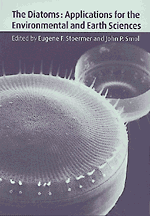Book contents
- Frontmatter
- Contents
- Contributors
- Preface
- Part I Introduction
- Part II Diatoms as indicators of environmental change in flowing waters and lakes
- 2 Assessing environmental conditions in rivers and streams with diatoms
- 3 Diatoms as indicators of hydrologic and climatic change in saline lakes
- 4 Diatoms as mediators of biogeochemical silica depletion in the Laurentian Great Lakes
- 5 Diatoms as indicators of surface water acidity
- 6 Diatoms as indicators of lake eutrophication
- 7 Continental diatoms as indicators of long-term environmental change
- 8 Diatoms as indicators of water level change in freshwater lakes
- Part III Diatoms as indicators in extreme environments
- Part IV Diatoms as indicators in marine and estuarine environments
- Part V Other applications
- Part VI Conclusions
- Glossary, and acronyms
- Index
8 - Diatoms as indicators of water level change in freshwater lakes
Published online by Cambridge University Press: 16 January 2010
- Frontmatter
- Contents
- Contributors
- Preface
- Part I Introduction
- Part II Diatoms as indicators of environmental change in flowing waters and lakes
- 2 Assessing environmental conditions in rivers and streams with diatoms
- 3 Diatoms as indicators of hydrologic and climatic change in saline lakes
- 4 Diatoms as mediators of biogeochemical silica depletion in the Laurentian Great Lakes
- 5 Diatoms as indicators of surface water acidity
- 6 Diatoms as indicators of lake eutrophication
- 7 Continental diatoms as indicators of long-term environmental change
- 8 Diatoms as indicators of water level change in freshwater lakes
- Part III Diatoms as indicators in extreme environments
- Part IV Diatoms as indicators in marine and estuarine environments
- Part V Other applications
- Part VI Conclusions
- Glossary, and acronyms
- Index
Summary
Introduction
Water level changes result from a variety of geological, biological or climatic processes. Many of these changes occur over long periods of time; however, some may be rapid or result from catastrophic events. In glaciated regions, water level changes are influenced by the geological process of isostatic rebound. As the weight of glacial ice is removed from the Earth's surface, depressed surfaces adjust upward, while adjacent areas may subside (i.e., Larsen, 1987). Lakes are often formed as embayments become isolated from larger water bodies, and existing lakes can reinvade subsiding regions. Differential rates of rebound within large lake basins may affect drainage patterns and water levels. Transport of sediments across river mouths or embayments can also create lakes and increase water levels.
In most cases, diatom microfossils from lake sediments can be used to identify the above changes. The clearest diatom signals are found in areas where lakes are isolated from marine or brackish waters (Denys & de Wolf, this volume). In freshwater systems, however, salinity gradients are absent, and signals are generally recorded as increases of deep-water or planktonic forms. Water level changes in lakes affected by isostatic rebound and sediment-transport isolation are common in the Laurentian Great Lakes region of North America (e.g., Yang & Duthie, 1995a; Wolin, 1996) and in the North Sea and Baltic region of Europe (e.g., Digerfeldt, 1988).
One of the most important factors controlling water level is a change in hydrological conditions.
- Type
- Chapter
- Information
- The DiatomsApplications for the Environmental and Earth Sciences, pp. 183 - 202Publisher: Cambridge University PressPrint publication year: 1999
- 45
- Cited by



